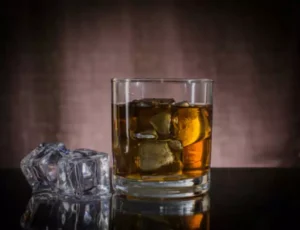Est. reading time: 4 minutes

Rich Homie Quan’s passing on Sept. 5 at the age of 34 is the latest example of a rap star’s life being tragically snuffed out due to an accidental drug overdose. Medical Examiner’s Office’s report, the Atlanta rapper died from the combined effects of fentanyl, alprazolam, codeine and promethazine. A hip-hop Halfway house artist dying of an accidental drug overdose has become more of a pattern than an anomaly in the past few years. However, unexpectedly and courageously, the Conservative government recognised those who were most at risk of contracting HIV, and organised a package of measures to contain the spread of infection.
- Mac Miller talks about the drug problems that he struggles with in this song.
- Whether it is regional or state institutions, both are compromised by the drug trade and those that control it.
- Through the years, various high-profile rappers have entered rehab for substance abuse or mental health problems.
- Musically, while other rappers rhymed about indulging in weed and Ecstasy and privately snorted cocaine, this film shows Wayne giddily mixing lean as his manager exasperatingly dealt with his artist in the grip of addiction.
The most popular drug in hip-hop history isn’t the one you think it is.
- He was addicted to cocaine so much so that it was one of the drugs that ultimately killed him in 2018.
- Shortly thereafter, Kool Moe Dee doubled down on the message in “Crack Monster,” a song dedicated to the “devil” that was encroaching on life in black America.
- Both regimes are ideologically opposed to recreational or problem drug use and, as far as we know, there is no state-funded rehabilitation provided in either country; the approach is to criminalise people rather than offer health-based interventions.
A rapper merely echoes his environment, surroundings, influences and experiences. Notably, other music genres had far lower rates of substance abuse references. Country music came in a distant second to rap with 36 percent of songs referencing substance abuse. This cautionary tone about cocaine gave way to rap lyrics in the early 1990s that increasingly portrayed marijuana use as a positive activity.
How rap reveals trends in DRUGS: Graphs show how hip-hop lyrics plot the rise and fall of illegal substances
“The fact that rap music didn’t always have those drug references is compelling because it shows that this music didn’t depend on that as an art form. The direction of the music seemed to change with the music’s growing commercial success.” Herd said that after rap albums celebrating marijuana use started going platinum in the early 1990s, drug references became increasingly common in rap music, as if they were a key ingredient to success. “Because of its fentanyl’s potency and low cost, drug dealers have been mixing fentanyl with other drugs including heroin, methamphetamine and cocaine, increasing the likelihood of a fatal interaction,” she says. “Fentanyl https://ecosoberhouse.com/article/what-sober-networking-is-and-why-it-is-important/ is much cheaper to make and easier to smuggle because small amounts are very powerful. Many who overdose have no idea the substances they are taking include fentanyl.” While hip-hop has seen the adverse consequences, the U.S. as a whole is dealing with the drug problem on a larger scale.

Published in Music & Culture IRL

The mixing of drugs could be lethal and make the person “not feel right” Juice describes. Mac Miller talks about the drug problems that he struggles with in this song. Some lyrics directly explain his usage, like “Just went through a half ounce of coke/ Blood pourin’ all out my nose/ Don’t tell my mom I got a drug problem” (lines 22–24).
- A study conducted by the University of Pittsburgh in 2008 analyzed Billboard magazine’s list of the 279 most popular songs of 2005.
- “Overdose amongst rappers and Americans in general has become an epidemic, unfortunately,” she tells XXL.
- In 2005, he was jailed on a murder charge, but the charges were dropped because of lack of evidence.
- Soon after assuming control, its leaders issued a decree banning farmers from growing opium.
- ” where Juice is trying to convey how drugs rule his life (lines 15–17).
- It remains to be seen what the recently elected Labour government will do, if anything, to tackle the tragic rise in drug related fatalities.
- Rather than drug production leading to the collapse of law and order, it was the other way round.
- In these big bacchanals with tens of thousands of people at these raves, electronic dance music parties, everyone’s using drugs.
Cocaine production brings with it violence as those further up the drug rappers with drug addictions production chain try to control its trade. Few parts of these societies are unscathed, from bribing local politicians through to whole regions that are controlled by organised crime. Keeping control means that the use of firearms and violence increases.


